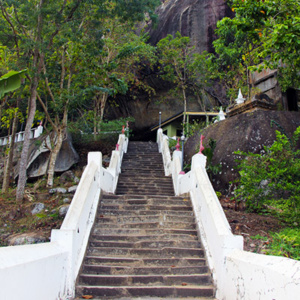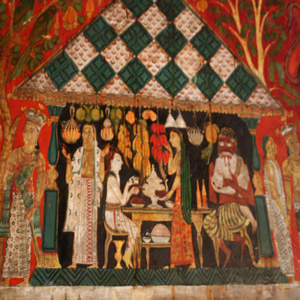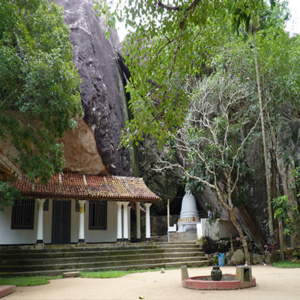


mulkirigala-raja-maha-vihara
mulkirigala-raja-maha-vihara-beliatta
mulkirigala-raja-maha-vihara-srilanka
Sigiriya is one of the ancient historical sites of Sri Lanka and it still draws many visitors each day around the year. But what are we talking of Sigiriya? Yes, Mulkirigala is best introduced via Sigiriya, as it is today known as “Little Sigiriya.”
Mulkirigala Rajamaha Vihara is located in Hambantota, in the Southern Province, Sri Lanka. As the name suggests, during the second century B.C., Mulkirigala is a rock temple consisting of a series of rock temples sculpted from the top of an enormous rock outcrop. In the 18th century, the Dutch ruler of the maritime province called this rock Adam’s Berg. There seems to have been some confusion between Adam’s Peak and Mulkirigala, at the time.
Legend stated that when a Veddah told him of a rock on which a temple could be constructed, King Saddhatissa was on a hunting expedition in this particular area. The King agreed to this concept and called the location “Mu Kivu Gala.” The place was known as Mulkirigala afterwards.
The Mahawamsa, records that in the third century King Saddhatissa built the Mulkirigala Vihara. The temple got royal patronage around the same era. It was after this that the temple was named Mulkirigala Rajamaha Vihara. The first ever historical proof indicates that Prince Rohana, Prince Bhaddakachchana’s brother, made his homeland the Mulkirigala region around 500 B.C. History indicates that in the Mulkirigala Temple was planted one of the 32 bo sprouts from the initial bo sapling brought over by Sanghamitta Theri.
The caves of the Mulkirigala have a mix of religious and secular paintings and carvings with several reclining Buddhas, including the dying Buddha’s 15 meter lengthy carvings. Mulkirigala Viharaya includes a lot of lovely paintings based on tales from Jathaka like Wessanthara.
At Mulkirigala there are seven viharas and seven shrines of the Buddha. One is known as Viharaya Dakkinagiri and was built around 400 A.D. by King Dhathusena. King Agbo built the Girivehera. A King Valagamba minister constructed Mulava Vihara.


